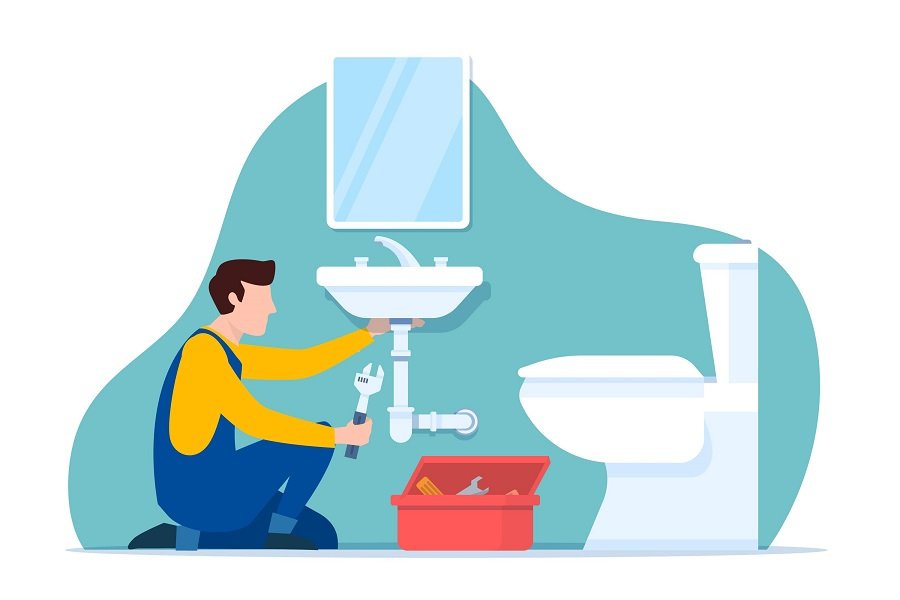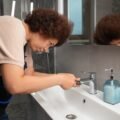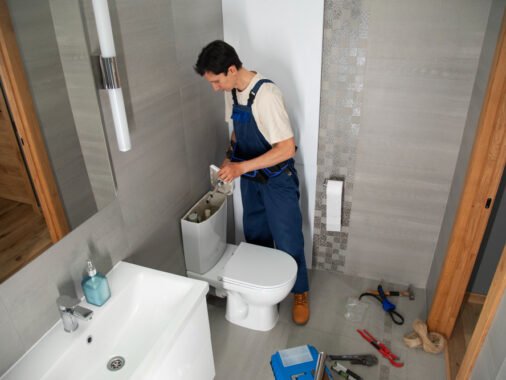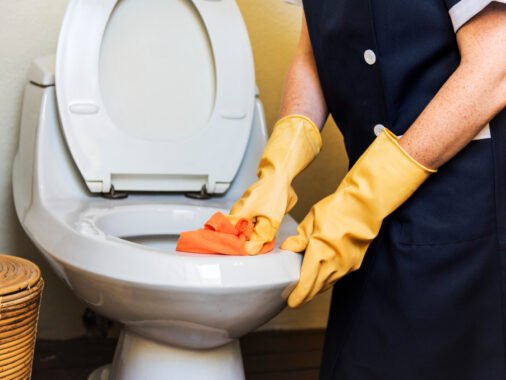Encountering a clogged toilet can be one of the most inconvenient and unpleasant experiences in household maintenance. However, with a calm approach and the right techniques, you can clear the blockage and restore functionality to your bathroom fixture. This guide will provide you with a step-by-step process to unclog a toilet, even without the aid of a plunger.
The Preliminary Steps:
Before diving into the unclogging process, it’s essential to prepare:
• Cease Water Flow: Ensure no further water enters the bowl by turning off the water supply to the toilet.
• Protect the Area: Lay down newspapers or towels to absorb any potential overflow.
The Techniques:
1. Hot Water Method:
• Heat up a gallon of water to just below boiling.
• Add a few squirts of dish soap to the toilet bowl.
• Carefully pour the hot water into the bowl from a height to help dislodge the clog.
• Allow the mixture to sit for several minutes before attempting a flush.
1. Baking Soda and Vinegar Solution:
• Pour one cup of baking soda into the toilet bowl.
• Follow with two cups of vinegar, pouring slowly to manage the fizzing reaction.
• Let the solution work for up to an hour, then check by flushing.
1. Wire Coat Hanger:
• Straighten out a wire coat hanger and wrap the end with a cloth to prevent scratching.
• Gently push the wrapped end into the toilet’s drain hole and maneuver it to break apart the clog.
• Remove the hanger and attempt a flush.
1. Eco-Friendly Enzyme Cleaners:
• Use enzyme-based cleaners that break down organic waste.
• Follow the instructions on the packaging for the best results.
Advanced Methods:
If the clog persists, consider these advanced techniques:
• Closet Auger: A specialized tool designed to navigate the toilet’s curves and break up clogs.
• Wet/Dry Vacuum: Can be used to suck out the obstruction (never use a regular vacuum).
Preventing Future Clogs
Tips to Avoid Toilet Clogs
- Use Less Toilet Paper: Flush only a reasonable amount of toilet paper at a time.
- Dispose Properly: Avoid flushing non-flushable items like wipes, sanitary products, or cotton balls.
- Regular Maintenance: Periodically clean toilet jets and drains to prevent buildup.
FAQs
Toilets can become clogged due to excess toilet paper, foreign objects, or flushing items that shouldn’t be flushed.
It’s generally not recommended to use chemical drain cleaners on toilets as they can damage plumbing and may not effectively clear clogs.
If plunging doesn’t clear the clog, try using a toilet auger (snake) to reach and remove the obstruction.
Consider calling a plumber if you’ve tried plunging and using a toilet auger without success, or if there are signs of a more serious plumbing issue.
If the toilet is about to overflow, turn off the water supply valve behind the toilet and use a plunger or auger to clear the clog.
If you don’t have a plunger or auger, you can try pouring hot (not boiling) water into the toilet bowl from waist height to attempt to dislodge the clog.
To prevent future clogs, avoid flushing large amounts of toilet paper or non-flushable items, and consider regular maintenance to keep drains clear.
Conclusion
While a clogged toilet is a nuisance, it’s often a problem that can be solved with patience and the right approach. From hot water and dish soap to a homemade wire hanger, the solutions are numerous and varied. If all else fails, don’t hesitate to call a professional plumber. Regular maintenance and careful use can help prevent future clogs, keeping your toilet in good working order.





